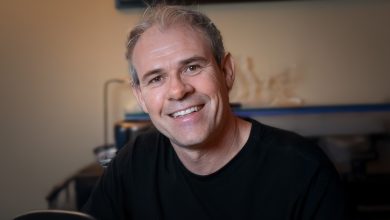TWiP #194 – In Living Color
Podcast: Download (Duration: 1:39:32 — 68.4MB)
This week on TWiP: A new mobile photo-sharing application raises $41 million dollars prior to launch, how printing often can save you time and headaches, Samsung taps Tessara for zoom technology without moving parts, and Zach Prez shares marketing tips for photographers to get customers knocking on your door.Hosts: Frederick Van Johnson, Alex Lindsay, Steve Simon, and Tristan Hall
NEWS & DISCUSSION
New Photo Sharing App Raises $41 Million in Funding
Another mobile photo sharing application called Color (video review) has raised $41 million in funding before it has even launched. The new application is the latest in a series of mobile photo sharing applications following in the footsteps of popular programs such as Instagram, Hipstamatic, etc. Color features a unique way of sharing and viewing photographs taken by people near you. This could prove to be a popular application at events such as weddings, conferences, etc where you don't have to friend people to see their photographs.
Printing More Often Can Save Time & Headaches
If you're one of those photographers who invested in a fancy printer but only print every few months, you may want to think about printing more often to save yourself time, money, and headaches. Leaving your printer idle for several months can lead to clogged nozzles, dried up ink cartridges, etc. Alex hasn't printed any photographs for himself since 2005. He views most of his photographs through his Apple TV or by printing books from iPhoto or Aperture. Frederick ran into this issue a few weeks ago when he needed to print something and wound up having to buy some replacement cartridges after not printing for awhile. Tristan also shares most of his stuff online and doesn't do much printing – mainly because he doesn't have places to put them. Steve has lately been outsourcing his printing. When he is going to do an exhibition, he will buy a top of the line printer, do all of his printing and then sell the printer because for him it doesn't make sense to hang on to it when he isn't going to use it very often. He does think however that the print is the ultimate backup and would encourage photographers to print their 5-star images from time to time.
Samsung Goes Tessara for OptiML Zoom Technology
Samsung has tapped Tessara Technologies for their OptiML Zoom technology which provides 3x zoom capabilities without moving parts for minature cameras such as those found in cell phones. This technology also increases low light capabilities by increasing the amount of available light by up to 250% without degrading image quality or depth of field.
WRITERS WANTED
We are still accepting applications for contributors and writers for TWiP. If you are interested and would like to apply, head over to www.thisweekinphoto.com/contribute
INTERVIEW WITH ZACH PREZ
This week, Frederick sat down (virtually) with Zach Prez where he discusses some very specific marketing tips that photographers can deploy today to get clients and customers knocking on the door tomorrow. You can find out more about what he's up to at Photography Web Marketing Guide. And also, as he mentioned in the interview, his special TWIP $10-off discount code is good through the end of March but we'll see if we can't get him to extend that for a few days into April.
LISTENER QUESTIONS
Question #1 – Lens vs. Tele-Extender
Listener BorisHDP from Wayne, NJ asks: “‘I'm going on vacation to the Florida Keys in April and I'm hoping to shoot some wildlife but I'm afraid my lens will not give me enough reach. I currently own a Canon 7D and a 70-200 2.8 IS. Should i rent a 100-400 canon lens or should I rent a 2x extender?”
Steve: From a quality standpoint, I would commit to the 100-400. The 2x tele-extender doesn't take up much room but he will lose a few stops of light and some image quality.
Question #2 – Benefits of Photoshop vs. Photoshop Elements
Listener mad-marv from Honolulu: Says he got an email offer from Adobe to upgrade from Photoshop Elements to CS5 for $300 and wants to know if it's worth it. He currently does greater than 90% of all his photo editing in Lightroom 3, using Photomatix Pro and Hugin for HDR. He only uses Elements when needing to crop a TIFF coming out of Hugin before importing to LR. He's interested in content aware fill, but are there any other tools that exist in CS5 but do not exist in PSE that could be worth the upgrade for a serious photographer, but novice photo editor?
Tristan: I'm not overly familiar with the differences but most of the time when I have used Photoshop Elements in conjunction with Lightroom, I haven't been let down and haven't noticed any major missing features that would compel me to upgrade to the full version of Photoshop CS5.
Alex: For me, I couldn't work in just Elements but I think most photographers could. I think there are more color management tools in Photoshop than in Elements. There are also a number of high-end photo editing tools which is great for heavy-duty ad agency type jobs but most photographers likely don't need those tools. You can also download a 30-day trial of Photoshop CS5 and see if there are any features you can't live without after using it for awhile.
Steve: I do most of my adjustments in Aperture and I think that Photoshop Elements is probably enough for most photographers as well.
Question #3 – Model Releases for Photojournalism
Listener shabec from Chicago asks: “I take a lot of pictures of house fires, tornado damage, and other natural disasters, and I like to take pictures of the people involved to capture the story, and emotions of the time, and the fire and police officers involved. If I'm using this as mainly as to give to newspapers, and news stations, should I be getting a model release of all the people I'm taking a picture of? Also – What is the best way to approach someone I just took a picture of who just lost there house, and ask them to sign the model release?”
Steve: You do not need a model release when doing that type of photography. I don't think there is a best way to approach someone in this situation and you likely shouldn't.
PICKS OF THE WEEK
Tristan – Photogene for the iPad
Steve – Sony HVLLBPB High Power LED Video Light
Alex – Workflow: Upload to my photo program within 24 hrs of shooting while it's fresh
Frederick – Fast Picture Viewer for PC
WRAP UP
Follow us on twitter.com/ThisWeekInPhoto. Join the Flickr critique group. You can also join our Facebook group.
Steve Simon – http://www.twitter.com/stevesimon or www.stevesimonphoto.com or www.nikoniansacademy.com
Tristan Hall – http://www.twitter.com/tristandhall or http://photocomment.net/ or http://www.facebook.com/PhotoCommentMag
Alex Lindsay – www.twitter.com/alexlindsay or www.bordersac.com
Frederick Van Johnson – www.frederickvan.com or www.twitter.com/frederickvan
CREDITS
TWiP is brought to you by the following sponsors:
SquareSpace – the fast and easy way to publish a high-quality website or blog. For a free trial go to Squarespace.com/twip, offer code TWiP. Be sure to check out the brand new Flickr, Facebook, and Twitter widgets that are now available. Check out www.squarespace.com/examples to see some great sites created with SquareSpace.
FreshBooks, an easy-to-use online invoicing service for photographers and other creative professionals that saves you time, gets you paid faster, and makes you look professional. Get started today with a FREE package at freshbooks.com.
Pre-Production and Show notes by Bruce Clarke www.momentsindigital.com or www.twitter.com/bruceclarke
Producer: Suzanne Llewellyn
Bandwidth provided by Cachefly
Intro Music by Scott Cannizzaro







On “OptiML Zoom technology”
Samsung does not say much about what the underlying technology in OptiML but I can give you a possible clue from problem that frequently appears at Physic PhD qualifying exams 🙂
It is likely that the answer is photonics/nonlinear optics based. Certain crystals do not have simple “linear” coefficient of refraction. Instead they bend light in unusual “nonlinear” ways, depending on direction, location inside the crystal,… Interestingly most of these also change their strange refractive properties when electric field is applied.
Hence, theoretically we know how to make a lens which is a simple crystal cylinder which changes its focal length depending on electric field applied. Because refraction is not linear as in normal lens glass, not only that we can change the focal length but the depth of field at certain aperture and focal length and much more. Think of LensBaby without moving elements attached to a zoom without moving elements.
So why is this miracle of technology just showing up? It have been present in scientific instrumentation for some time. Problem is that crystals with these properties which are well known are not of great optical quality. Hence, no surprise that Samsung is applying this first on devices which are not expected to produce results of great quality (phones. Technology is advancing and it is certain that we will find crystals capable of doing this while keeping quality of optical performance we are used to in cameras. Future lenses might be simple 1 element zoom/tilt-shift/special effects nonlinear optics pieces.
Regarding Tristan’s quick explanation of Parkour, I have a photography-based video podcast, that covered Parkour last month:
https://www.photomotion.tv/2011/02/parkour-run-jump-flip-fly/
I’m more of an amateur photographer, but I do enjoy content creation and the podcast world.
Great show!
Some great images in there. You may like the handful of images that were posted to our PhotoWalk gallery from March https://photocomment.net/galleries/photo-walks/photo-walk-wits-parkour-26-mar-2011/